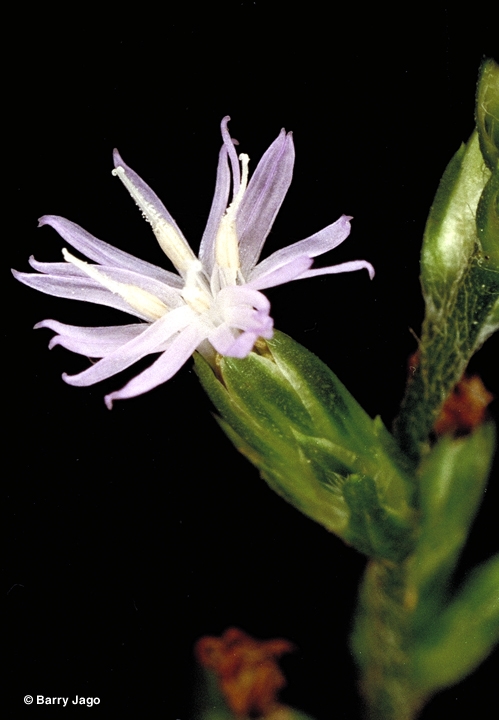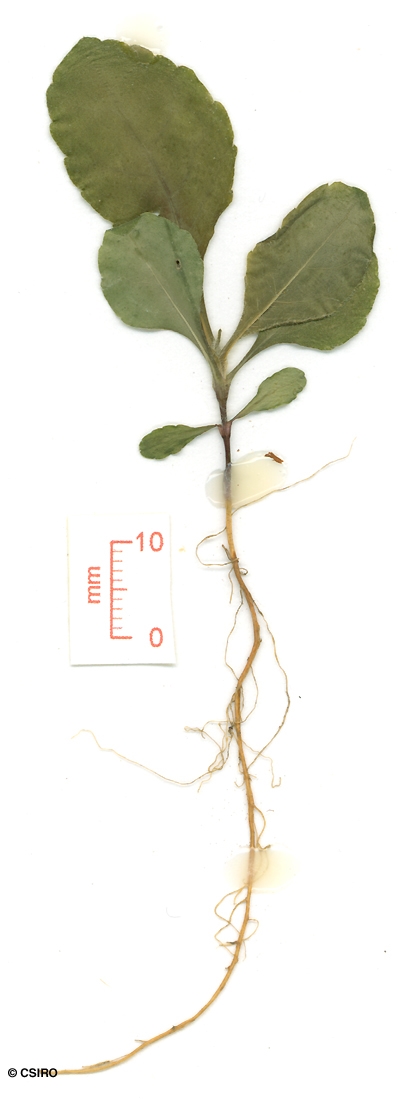Australian Tropical Rainforest Plants - Online edition
Pseudelephantopus spicatus (Juss. ex Aubl.) C.F.Baker




Baker, C.F. (1902) Transactions of the Academy of Science of St. Louis 12(5): 55.
Elephant Weed
Usually flowers and fruits as a herb but occasionally flowers as a shrub.
Leaf blades variable in size, up to 18 x 5 cm. Hairs present on both the upper and lower surfaces of the leaf blade but more numerous near the margin. Glands visible on the underside of the leaf blade.
The pappus on the end of each fruit consists of two longer and thicker bristles which have been twisted and contorted to form sigmoid heads and a number of shorter, thinner bristles. Fruit about 5-6 mm long.
Hypocotyl glabrous, stem above the cotyledons clothed in erect, white hairs. Cotyledons obovate, about 8-9 x 3-4 mm, apex glandular. First pair of leaves with toothed margins. At the tenth leaf stage: leaves obovate or narrowly obovate, sessile +/- clasping the stem. Both the upper and lower surfaces sparsely clothed in pale prostrate hairs. Lower surface of the leaf blade minutely glandular. Seed germination time 10 to 21 days.





